Casino Gambling Math: The Ultimate “Cheat Sheet” Every Gambler Needs
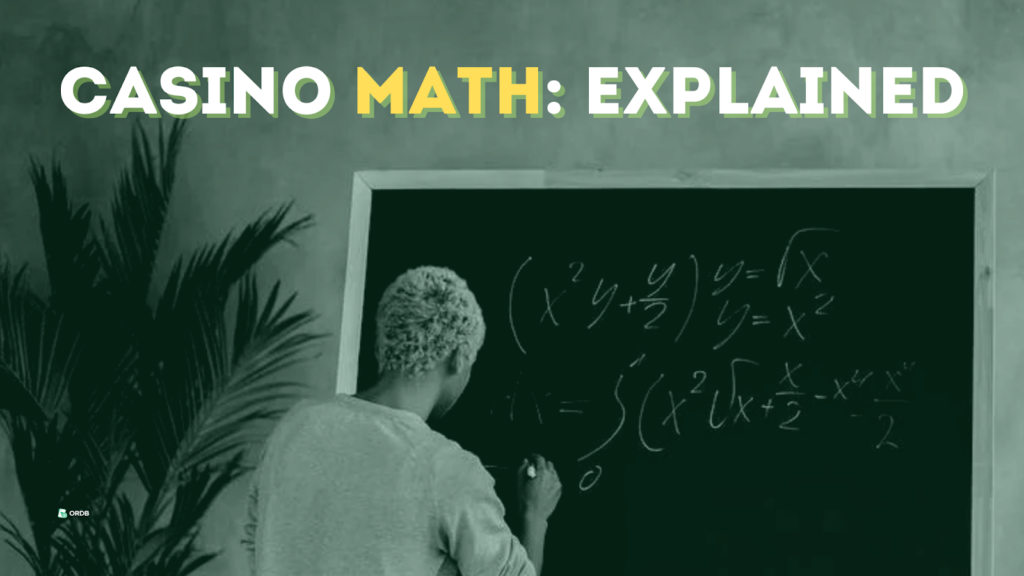
Can you boost your chances of winning big when playing crypto casino games? You’ve surely heard about the inherent casino’s advantage over players before. That is, in the long run, the house always wins.
Fortunately, you can turn the odds in your favor by implementing some gambling math. From calculating probability and house edge to counting cards and using Poker or Blackjack cheat sheets, there are numerous ways to make your play more rewarding. Read on to discover tips and tricks every gambler should be aware of.
Why Does Math Matter In Gambling?
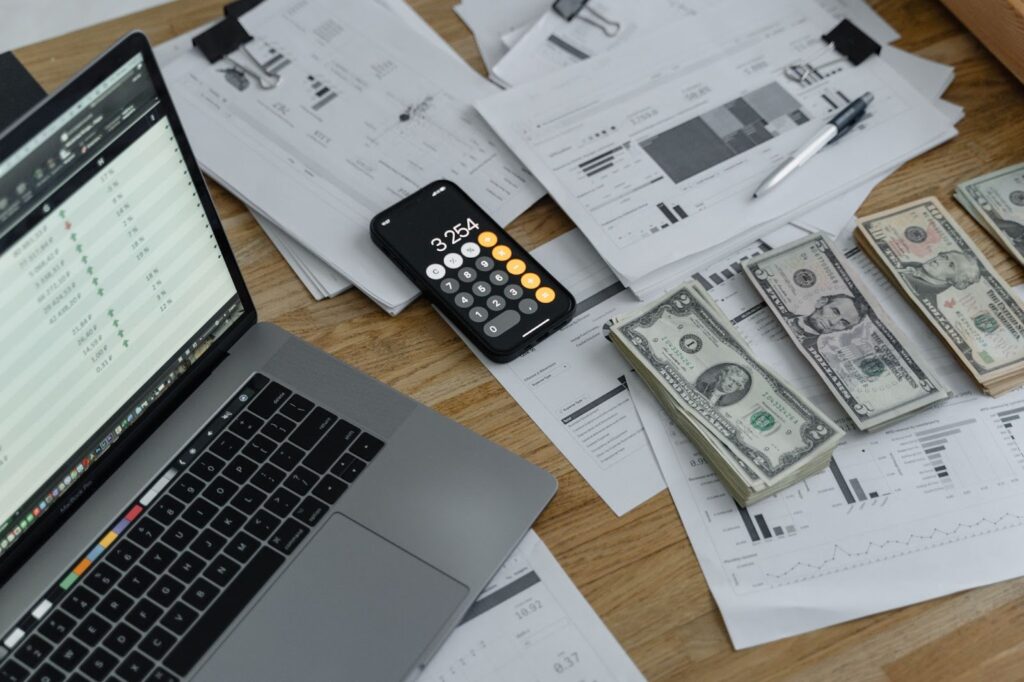
At first sight, luck is the only factor determining your success in online crypto casino games. But, if you dig a bit deeper, you’ll see that your skills and understanding of how the casino works also matter.
Mathematics is at the heart of any casino — crypto and fiat, online and land-based. Casino games are built on mathematical models and provide the operator with a long-term advantage over players. Whenever you win, a casino will pay out your earnings at rates lower than the probability of winning money suggests.
Understanding what affects the casino’s profit in a particular game can help you adjust your strategy as needed.
Knowledge ≠ Cheating
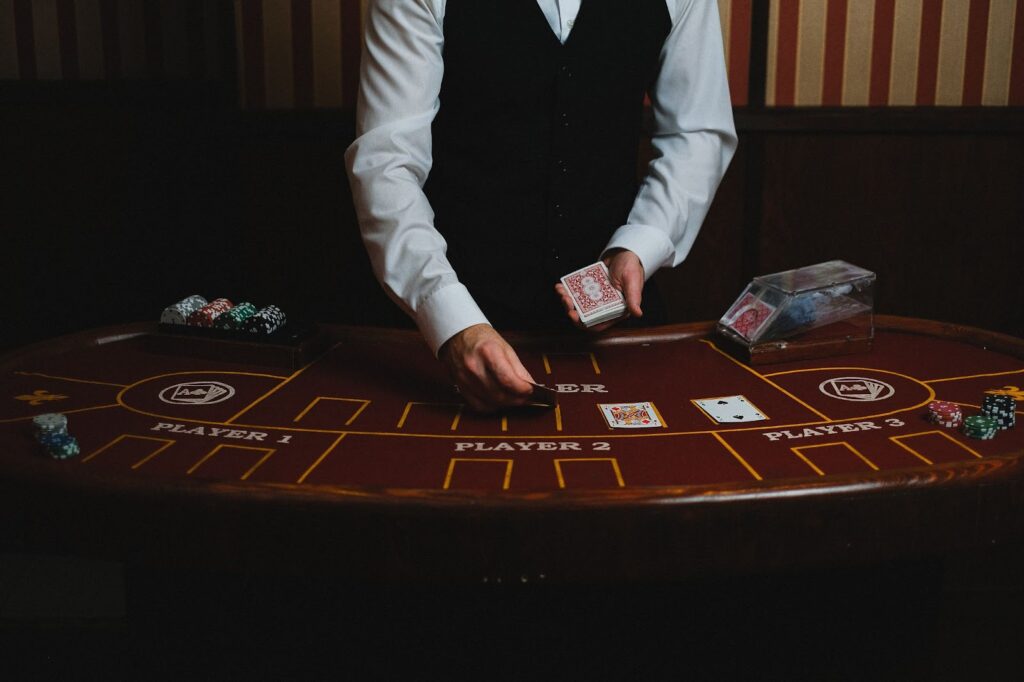
Before diving deep into gambling math, let’s see how legal and ethical this practice is.
Evaluating the odds of certain gaming events can help you build your winning strategy. When playing card games, you can try counting cards to boost your chances of success (we’ll talk about card counting in more detail later, so stay tuned!).
How do cryptocurrency casinos treat players using these techniques? In most cases, if you rely solely on your arithmetic skills, your gambling behavior is not against the law. But, using assistive tools like third-party card counting software can get you banned from a crypto casino.
Overall, when you estimate the probability of certain events or count cards to strategize your play, you’re not cheating. Instead, you are trying to minimize your losses and maximize potential winnings, given the current situation. Plus, given that the odds are always in the operator’s favor in the long run, you’ll hardly take all the casino’s profit!
The Probability Model

Experienced gamblers leverage various strategies that rely on probability theory. Understanding the basics of this theory can help you reduce your loss rate and stay profitable in the long run. Below, you’ll see how probability theory works in popular casino games.
Card Games
Let’s start with the probability theory basics common to most card games.
As you know, a standard deck of cards consists of 52 cards. Therefore, the probability of getting any particular card is 1/52.
Further, each card in a deck has 1 of 4 suits: clubs, diamonds, hearts, and spades. Thus, your chances of receiving a card of a certain suit are 1/4. Given that there are 13 ranks in the deck, the probability of getting a card of a certain rank is 1/13.
Everything looks clear so far. Now, let’s calculate the probabilities specific to particular games.
Blackjack
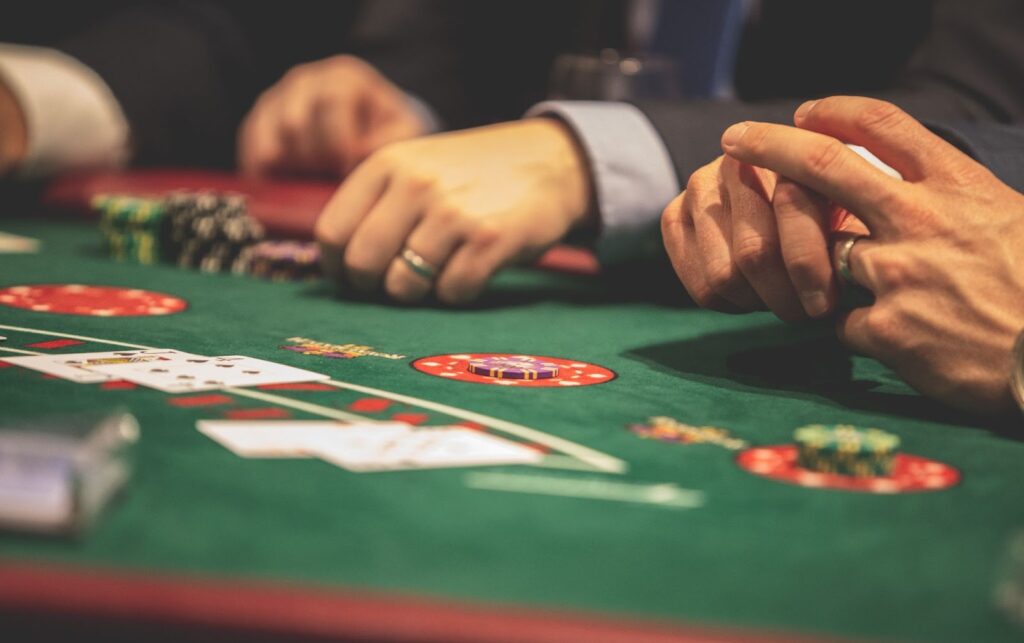
In Blackjack, as in other card games, the probability of getting particular cards is dynamic. It changes as the game progresses.
Let’s say you got an Ace at the start. What are your chances of getting the second ace on the next step? Since there are 51 cards left in the deck, and 3 of them are Aces, the probability is 3/51 or 1/17. Or, you can express it as 16 to 1.
What about drawing a Queen and a King in a row? The chance of getting a Queen at the start of the game is 4/52 or 1/12. After getting a Queen, there are 51 cards left, and the chance of getting a King is 4/51.
You can use a cheat sheet for Blackjack and other games when playing in a crypto casino. Luckily, you don’t have to calculate everything in your head. We’ll talk more about these cheat cards later, so keep reading.
5-Card Poker
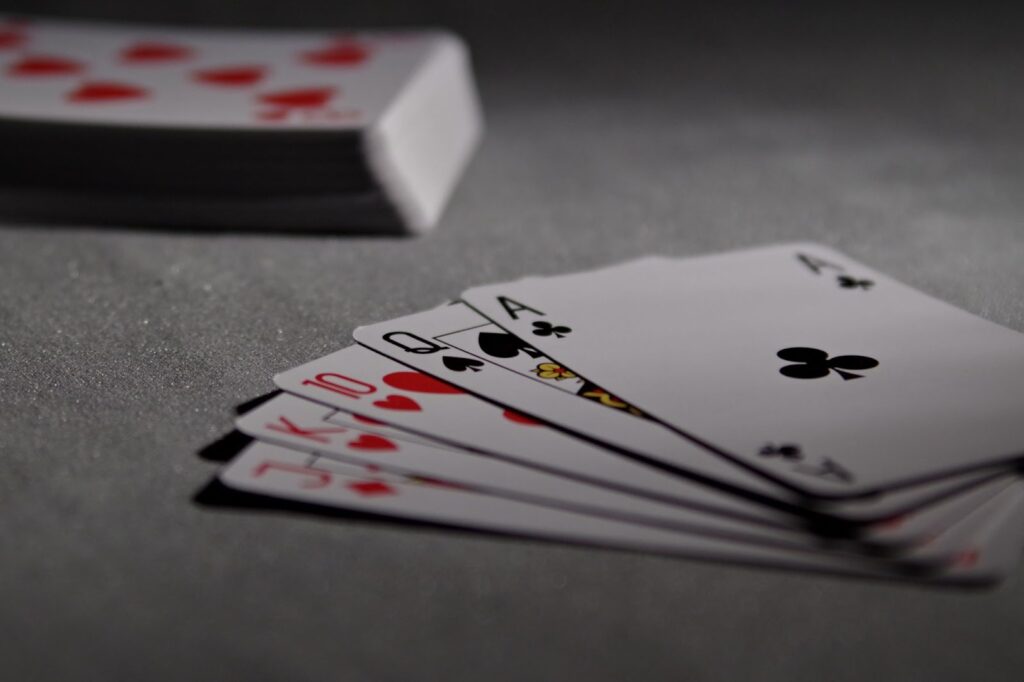
In 5-card Poker, each player receives 5 cards at once. What are your odds of getting this or that hand?
The probability of drawing a royal flush is extremely low. There are only 4 ways to get royal flush VS 2,598,956 ways to get something else. Thus, your chances of drawing the desired combination are 2,598,956 to 4 or 649,739 to 1 or 0.000154%.
Check out the Poker cheat sheet that shows the frequency of each hand.
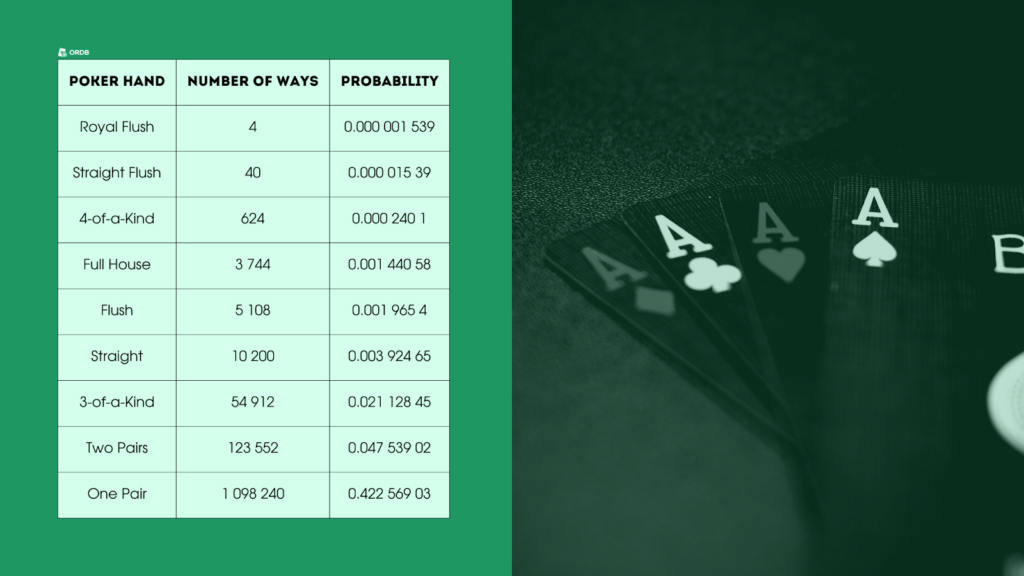
Here are some other articles about Poker in case you want to learn more:
- The Ultimate Guide To 3 Card Poker: Rules, Payouts, And Winning Strategies
- 4 Signs to Spot Online Poker Cheats
- Is BetOnline Poker Rigged? Everything You Need to Know
- What is a Rake in Poker: Ultimate Guide for Poker Gambling Fans
Texas Hold ’em
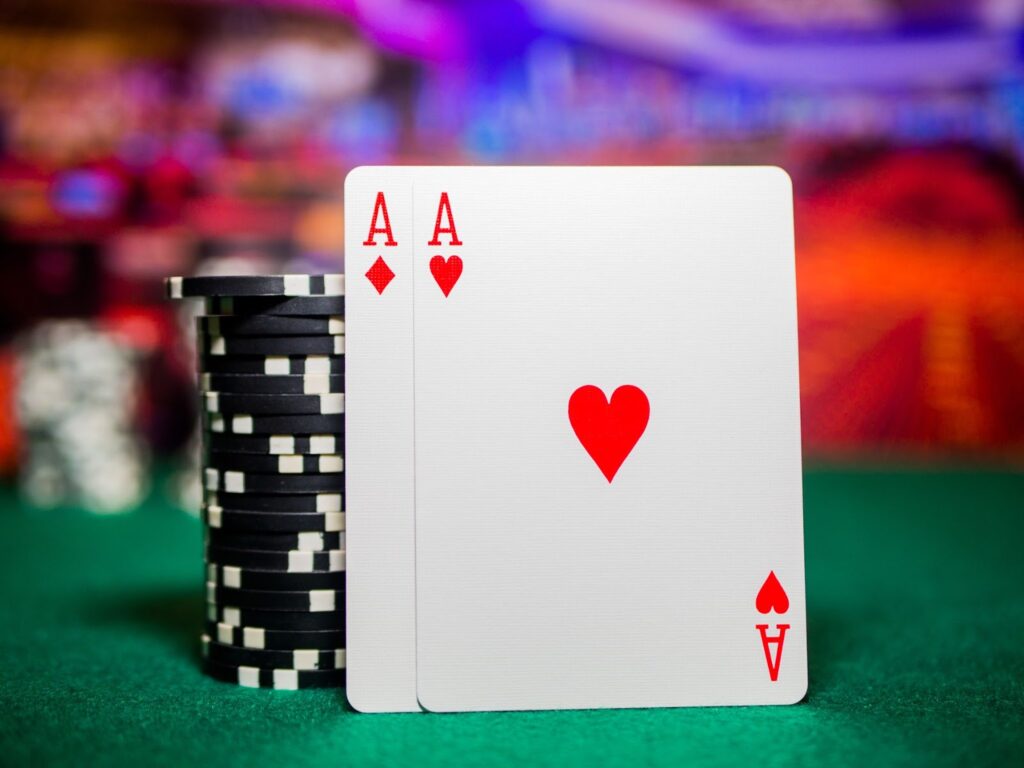
Based on the Texas Hold ’em game rules, all Poker players receive 2 hole cards at the start. Since there are 52 cards in most decks, the number of combinations of two cards equals 52 * 51/2 = 1,326.
Your chances of getting a pair of hole cards will look like this: 4 * 3/2=6. By doing a simple calculation, you will see that a particular pair of hole cards will come to you once every 221 hands (6/1,326 = 1:221). Since you can only make 13 pocket pairs in 52-card Poker, any pocket pair will be your starting hand once every 17th hand (221/13).
Craps
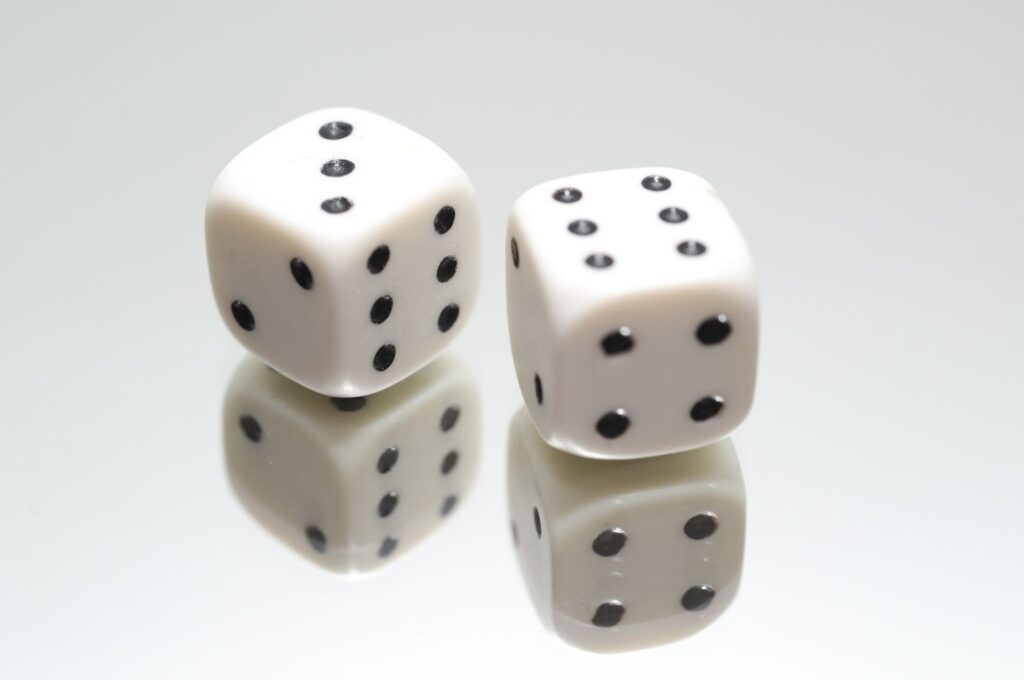
In games with two 6-sided dice, there are 36 possible outcomes — 6 (sides of one die) * 6 (sides of the second die).
What is the probability of rolling, say, seven? There are 6 possible combinations — 1 and 6, 2 and 5, 3 and 4, 4 and 3, 5 and 2, and 6 and 1. Thus, the probability of getting 7 is 6/36 or 1/6, or 16.67%. You can also express it as 5 to 1.
Want to learn more about dice games? Here are some articles that may interest you!
- Everything You Need To Know On How To Play Craps With Friends In 2024
- How to Play Dice Gambling Games: Street Dice Rules And Strategy Tips
- Top Craps Strategies: A Quick Guide For Everyone
Roulette
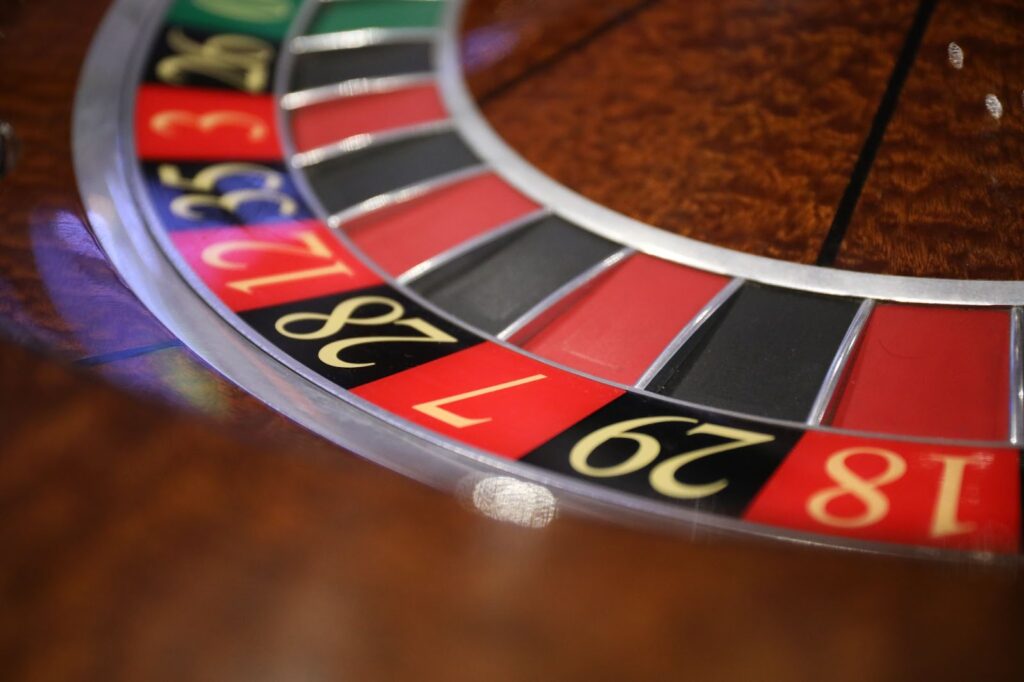
The Roulette playing field is a spinning wheel divided into sectors of two colors: red and black. The European Roulette wheel has 37 pockets enumerated from 0 to 37. The American Roulette wheel has 38 decors and two green pockets for zero. Your goal as a player is to bet on the pocket where the ball lands.
In Roulette, you can bet on specific numbers, groups of numbers, black VS red, and even VS odd numbers. The potential win when betting on numbers is much higher than when guessing the color or parity.
Without zero sectors, the probability of winning for a player bet on the pocket color would be 18/36, or 50%. But, because of the green pocket, it is 18/37, and the operator gets an extra chance to win — 1/37 or 2.7%. In the American version, the discrepancy is twice as large due to the second zero and amounts to 5.4%.
Slots
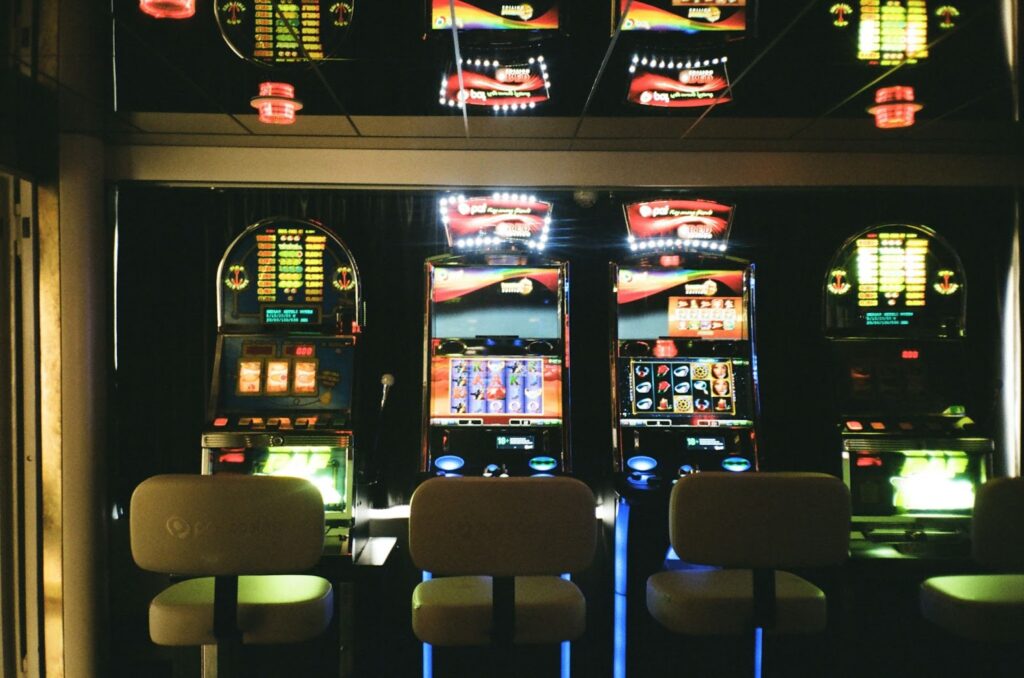
Regarding slots, it’s difficult to calculate the probability of outcomes independently due to the lack of information. You can look at the paytable and find out the RTP data, but that’s not enough. In most cases, you won’t know how often the symbols appear on the reels; this information is only available to operators and casino software providers.
To illustrate the probability calculus in slots, let’s assume that the operator has posted the frequency of getting certain symbols on its website. Suppose the strawberry symbol appears in 1 out of 10 spins. In this case, your chances of getting three strawberries are 1/10 * 1/10 * 1/10 = 1/1,000 or 999 to 1.
Other related articles:
- What is the Best Slot Volatility in Online Crypto Casino Games
- Does Commerce Casino Have Slots?
- 10 Expert Tips To Find The Loosest Slots At San Manuel Casino
- Crypto Casino Software: Overview, Analysis, and the Best Providers
Calculating Expected Value And House Advantage
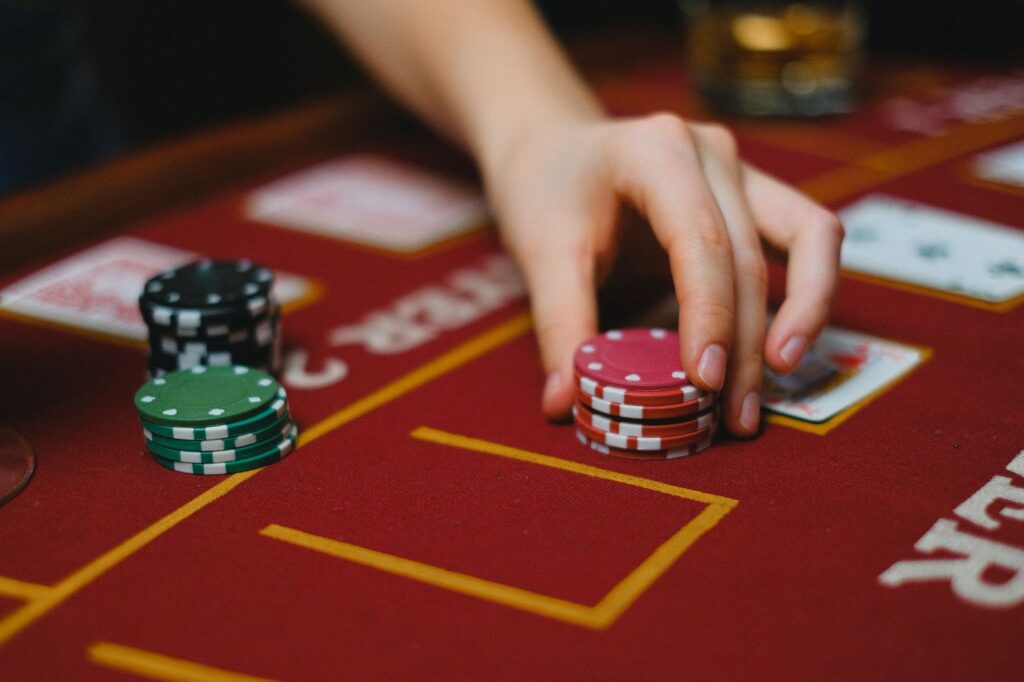
Along with estimating the probability of certain gaming events, you want to know if these events will bring you a win or loss. Calculating the expected value and the house edge will give you a clearer vision of what you may count on. Armed with this knowledge, you can strategize your play with confidence.
“House edge” is a term that describes the casino’s profit, also known as the percentage of the player’s original bet. House edge is the operator’s advantage over the player in the long run. This indicator differs across games; the lower it is, the greater the potential winnings of the gambler.
What does the house edge in European Roulette look like? The Roulette wheel has 1 zero pocket and 36 non-zero pockets. Thus, if you wager $10 on black, your odds of winning $1 are 18/37, and the probability of losing $1 is 19/37.
Here’s how you calculate the expected value (EV):
EV = 1 * (18/37) + (-1) * (19/37) = 18/37 — 19/37 = -1/37 = -2.7%
The expected value of your bet of -2.7% means that the house edge is 2.7%. In 10 rounds of $1 per round, a cryptocurrency casino offering European Roulette will win $0.27 (10 * $1 * 0.027).
Some operators publish the Return To Player or RTP rates for their games, giving you an idea of the house edge. Seasoned gamblers recommend playing slots with an RTP of 97% and higher. With such an RTP, you can expect to return 97 of every $100 spent in the long run. The house edge, in this case, will constitute 3%.
Luck Or Standard Deviation?
Many players believe that success in the casino largely depends on luck. In mathematics, there is a value for this! Can you quantify the luck factor?
Calculated as a square root of the variance, standard deviation enables you to determine how likely the game outcomes will be within certain limits.
If you look at the Gaussian distribution curve, you’ll see the following:
- A 68.26% probability that the session outcome will be within 1 standard deviation.
- A 95.46% probability that the session outcome will be within 2 standard deviations.
- A 99.74% probability that the session outcome will be within 3 standard deviations.
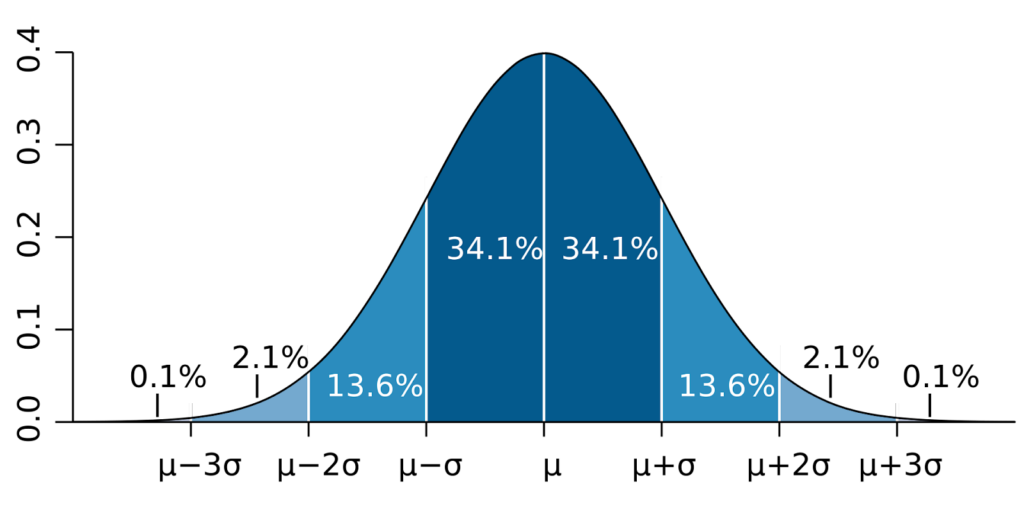
How does the standard deviation work in practice? Let’s illustrate it with examples.
Example 1: Flipping A Coin
Suppose you flip a coin 100 times in a row. Assuming that the standard deviation for a single trial is 0.5, you have the standard deviation of 5 for 100 trials (square root of 100 multiplied by 0.5).
In an ideal scenario, the probability of getting the heads side is 50/50 or 1 to 1. Given the deviation of plus or minus 5, you have a 68.26% chance of getting the heads side from 45 to 55 times during the 100-flip experiment.
Example 2: European Roulette
Flipping a coin is pretty trivial, though. In other games, factors like the number of gaming sessions played, average wager, and payouts come into play. For games like Roulette, the following binomial distribution formula applies:
SD = square root (number of rounds played * probability of winning * probability of losing) * average bet * (unit of bet + payout)
How to use this formula for European Roulette? Let’s calculate the standard deviation for a theoretical win of a split bet that pays 17:1, and the average bet is $1 over 4 rounds played:
SD = square root (4 * 2/37 * 35/37) * 1 * (1 + 17) = square root (0.204529) * 1 * 18 = 3.681522
With the estimated deviation of your theoretical win, you can make informed decisions about your bankroll.
Skill-Based Casino Games: Card Counting VS Cheat Sheets
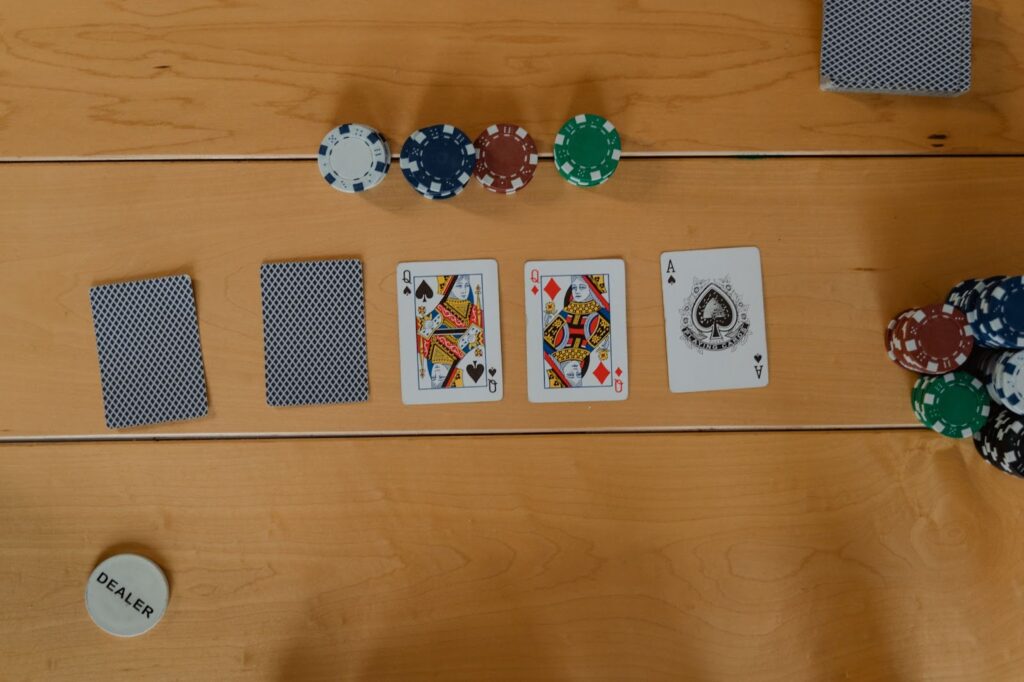
If you wish to win a significant amount at the casino, knowing which games offer the best chances of success pays off. As a rule, these are different types of table games, also called skill-based games or games of strategy.
In skill-based games, you can leverage techniques like counting cards or cheat sheets to improve your odds as the game progresses. While you won’t minimize the house edge, you can still lower it significantly and get the most out of your wagers.
Card Counting Technique
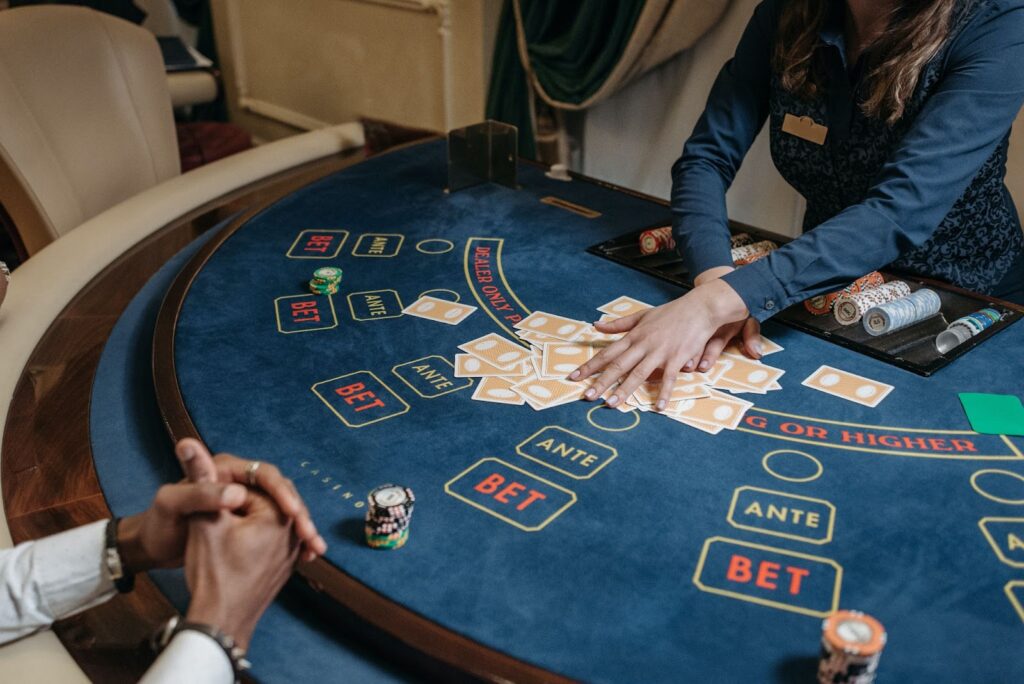
The idea behind counting cards is that you benefit from high-ranking cards such as tens and aces. Cards that rank lower — from deuce to six — are not interesting to you. You can evaluate your chances of winning by keeping track of the cards that have gone out of the game. You increase your bet if more beneficial cards are left in the deck. If the cards in the deck favor the dealer, you reduce your bet.
Hi-Lo Card Counting System
The most common card-counting system is the Hi-Lo system. In this system, each card receives a certain numerical value:
- +1 for low cards — 2, 3, 4, 5, and 6
- 0 for medium or non-counting cards — 7, 8, and 9
- -1 for high cards — 10, Jack, Queen, King, and Ace
Using this method, you keep track of cards out of play and add or subtract the respective numerical values. If the amount goes into plus, your chances of success increase, so you can raise your bet. If the amount goes into minus, you don’t increase your wagers since the odds are not in your favor.
Card Counting In Cryptocurrency Casinos
Compared to land-based gambling establishments, it’s much easier to count cards at your favorite crypto casino online. In particular, you can try counting cards when playing live dealer games like Blackjack or Poker. As long as you don’t use third-party software to count cards, relying on your arithmetical skills is safe.
However, online gambling operators may still limit your opportunities to count cards. Many crypto casinos have implemented automatic shuffling of cards with each new hand dealt in a game. Since these games rely on RNG algorithms, card counting becomes useless.
Blackjack Cheat Sheet (Basic Strategy)
Looking to cut the house edge in a crypto Blackjack casino? The basic Blackjack strategy is a good starting point for you. Learning this set of tips will help you minimize your expected losses and maximize expected gains.
The basic Blackjack strategy relies on information about your cards and the dealer’s up card. Without any other information, the basic strategy is the only viable way to play the hand. Other strategies tend to produce worse results.
In Blackjack, you need to distinguish between hard hands VS soft hands. A hard hand means you have no Ace, or an Ace is counted as 1. A soft hand assumes that you got an Ace plus another card.
Here is a Blackjack cheat card for a 6-deck game. This cheat sheet will show you when it makes sense to hit, stand, split, or double.

Poker Cheat Sheet
In most Poker games, hands consist of 5 cards. The Poker cheat sheet below will help you memorize hand rankings.
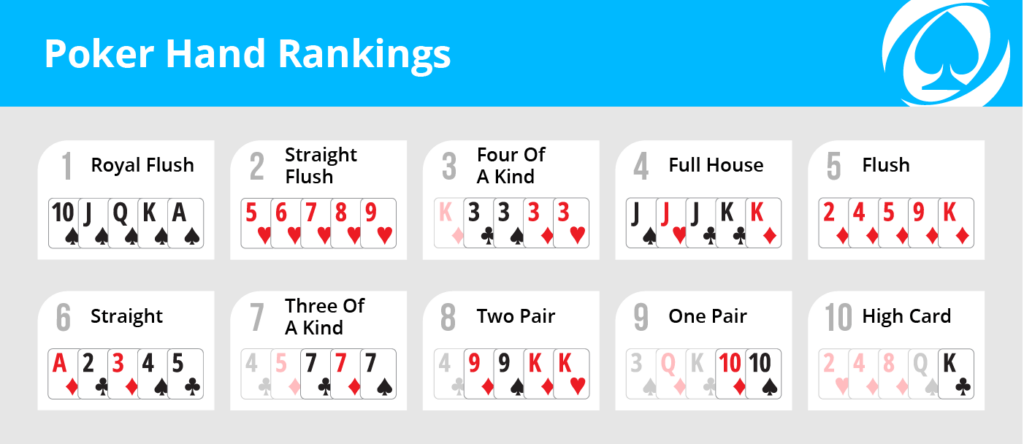
If you are a Poker enthusiast looking to make more winning hands, you need to know what beats what in this game. Thus, the strength of the Poker hands you get is of utmost importance.
Here is a quick cheat sheet to what can beat what in Poker:
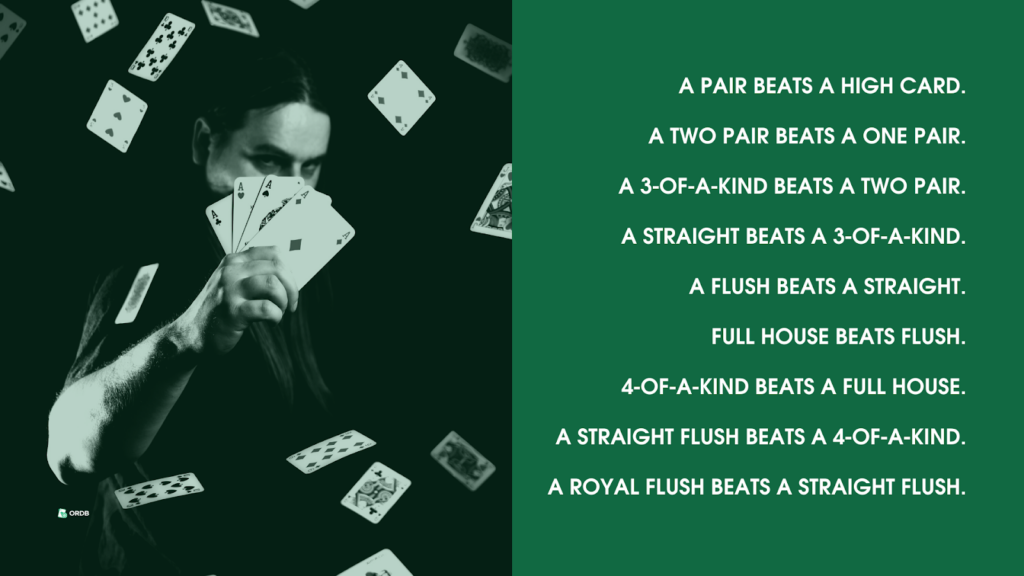
Now, what if the strength of players’ hands is the same? In this case, the rank of the cards comes into play. That is, a pair of jacks will beat a pair of tens.
Texas Hold ’em Cheat Sheet
In Texas Hold ’em, the strength of your starting hand is crucial. The stronger the hand, the less likely you are to fail.
Wondering how to act when getting this or that hand? The starting hands cheat sheet below will help you make an informed decision.
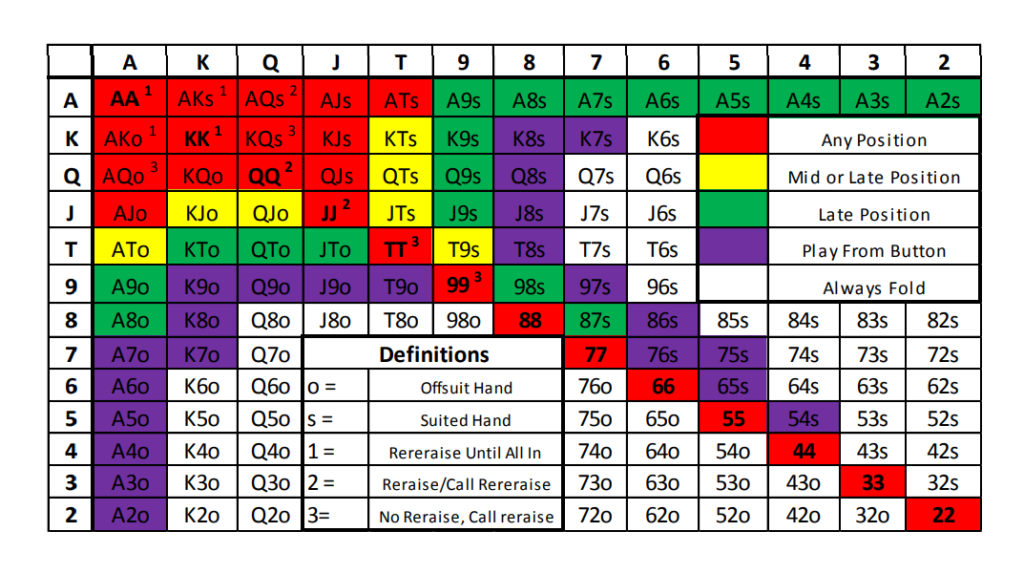
As practice shows, no more than 20% of Poker hands are worthy. Thus, folding the rest 80% and playing with fewer hands is safe. If you’re new to Poker, it’s best to play with no more than 15 of the top hands. With experience, you can increase the number of hands.
Common Betting Strategies To Be Aware Of
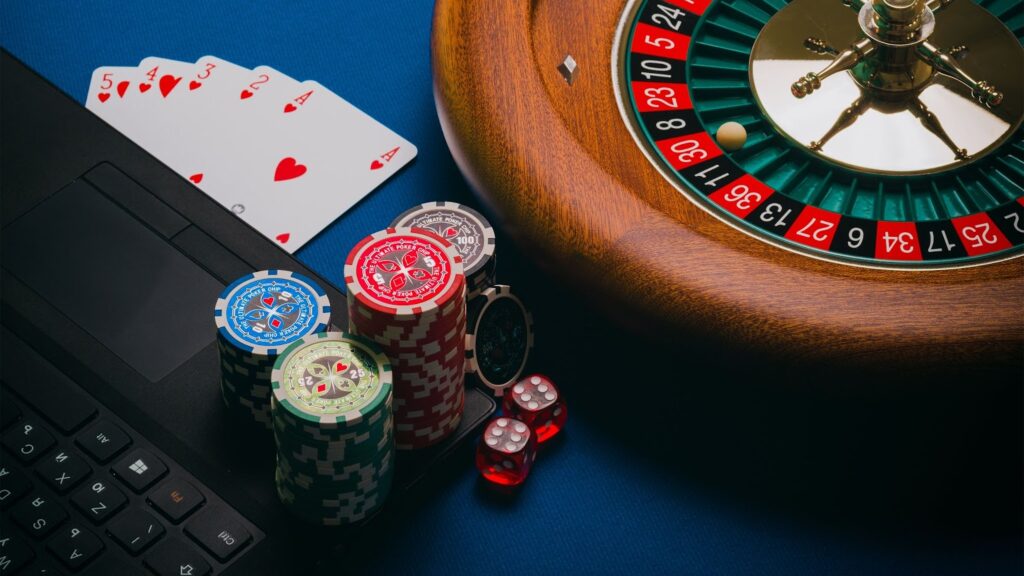
Gamblers are trying out different betting strategies to figure out how to win at crypto casinos. Based on mathematical calculations, these strategies help players manage their bankroll wisely and increase their chances of winning.
Below are some gambling strategies that deserve your attention.
The Martingale Strategy
The Martingale strategy is a popular progressive betting system. This approach assumes that you double the size of your bet after each loss until you finally win. Such an increase should compensate for previous expenses.
Although the Martingale system seems to be a viable strategy, it is important to understand its risks. First, each unsuccessful bet leads to doubling your expenses. You can lose a huge amount if you run out of money before your bet wins. Second, if the casino limits the maximum wager size, you may fail to compensate for your losses. Losing the maximum allowed bet deprives you of the chance of winning back your money.
Oscar Grind Strategy
The Oscar Grind strategy, or the Reverse Martingale or Anti-Martingale, involves raising bets if you win. The minimum rate change coefficient in this strategy equals 2. For example, you bet $1 on Roulette on red. If red comes up, you bet $2 on red, and so on.
If you get into a series of wins using this strategy, your profit will be greater due to increased bet amounts. But, if a series of losses begins after the first winning bet, you will lose a significant part of the bankroll.
D’Alembert Betting System
According to the D’Alembert system, the player bets on events with odds from 2 to 4. To illustrate how it works, let’s assume that each bet equals 1 unit. If your first bet was unsuccessful, you would increase the next bet by one unit. If you win, you reduce the next bet by 1 unit.
By following this strategy, you increase the size of your bets until you make a profit. If you have an equal number of wins and losses per session, you will be in plus.
Gambler’s Fallacy And How To Avoid It
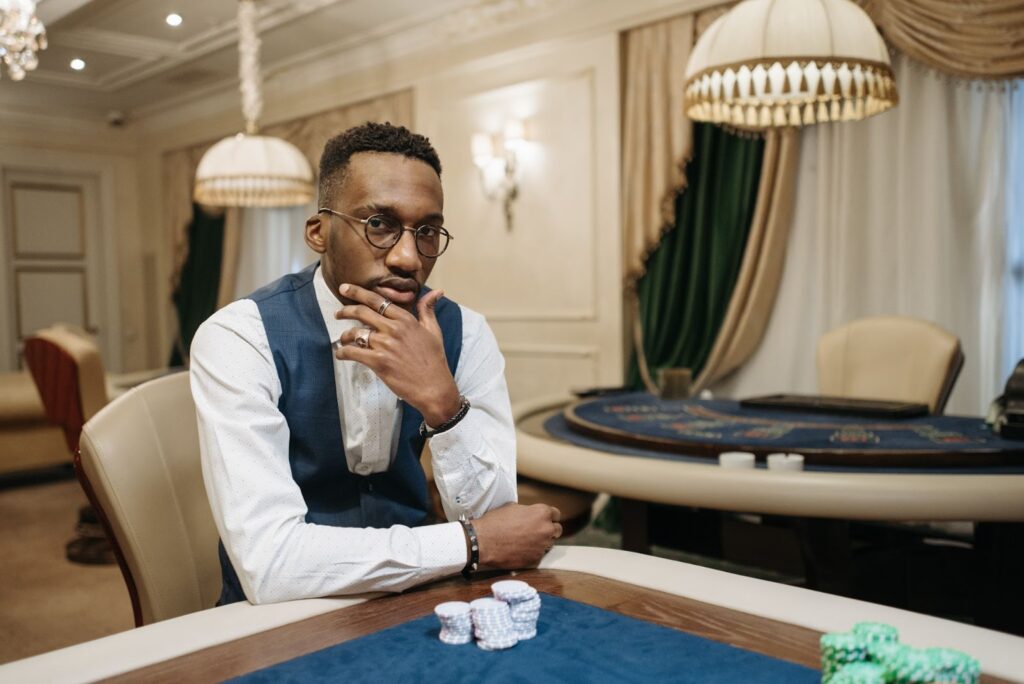
As a casual casino player, you might have heard about the gambler’s fallacy or the Monte Carlo fallacy before. It’s the mistaken feeling that if a random outcome occurs more frequently than normal, it is less likely to happen next time. Indeed, many of us tend to believe that the same gaming event cannot occur repeatedly. With these thoughts in mind, gamblers choose to bet on a different event, which is often the wrong decision.
But the truth is that the probability of a desired outcome doesn’t depend on the previous results. Suppose you flipped a coin and got the tails side 9 times in a row. If you toss it for the tenth time, the probability of getting either tails or heads is still 1/2. So, the two outcomes are independent of each other.
Is there any way to avoid being trapped by the gambler’s fallacy? Since it’s one of the cognitive biases people have, certain debiasing techniques may come in handy.
The first thing to do is to distinguish interrelated events from independent ones. If it seems to you that the events are interdependent, look for a cause-and-effect relationship between them. The fact that events occur one after the other is insufficient to qualify them as interdependent.
If the results of different gaming sessions are independent, you need to internalize that fact. That is, try to understand that the dice don’t “remember” the previous outcomes and don’t impact the future rolls.
Conclusion
To win at a cryptocurrency casino, you need more than just luck. By applying math wisely, you can cut the house edge in your favor and improve your chances of success.
If you’ve already decided on the best online crypto casino to play at, it’s time to put your skills to the test! Calculating the odds of different events and your expected value will help you find the right strategy for your favorite game. Techniques like card counting and tools like cheat sheets enable you to adjust the strategy throughout the game.
Remember to gamble responsibly — stick to your budget limit and never wager more than you can afford to lose. Stay safe, and have fun!
Related Articles
What’s The Best Casino Game To Win Money While Using Strategy?
Top 10 Tips For Crypto Gamblers
WildCasino Blackjack Games Review 2024
Evolution Gambling Games: Top Games of 2024 + Provider Overview
9 Proven Neverland Casino Tips and Tricks for 2024
FAQ ❓
The house edge varies across crypto casino games significantly. Keno has the highest house edge that can reach up to 30%. In games of strategy like Blackjack, the house edge can be as low as 0.5%.
There is nothing wrong with using a Poker or Blackjack cheat sheet when playing at a crypto casino. Whether you are using fiat or cryptocurrency, casino sites don’t (and technically cannot) limit the use of these sheet cards.
It is possible to reduce the house edge in strategy-based games like Blackjack by applying arithmetic skills or using cheat cards. Programmed with certain payback percentages giving the house an edge, slots don’t leave players an option to influence the casino’s profit.
Still, you can adjust your gambling behavior to improve your chances of winning in slots. Here are some tips for you to follow:
1. Stick with slots that offer higher payout percentages
2. Opt for smaller jackpots, as they tend to pay out more often
3. Take advantage of the casino crypto bonuses and free spins.
